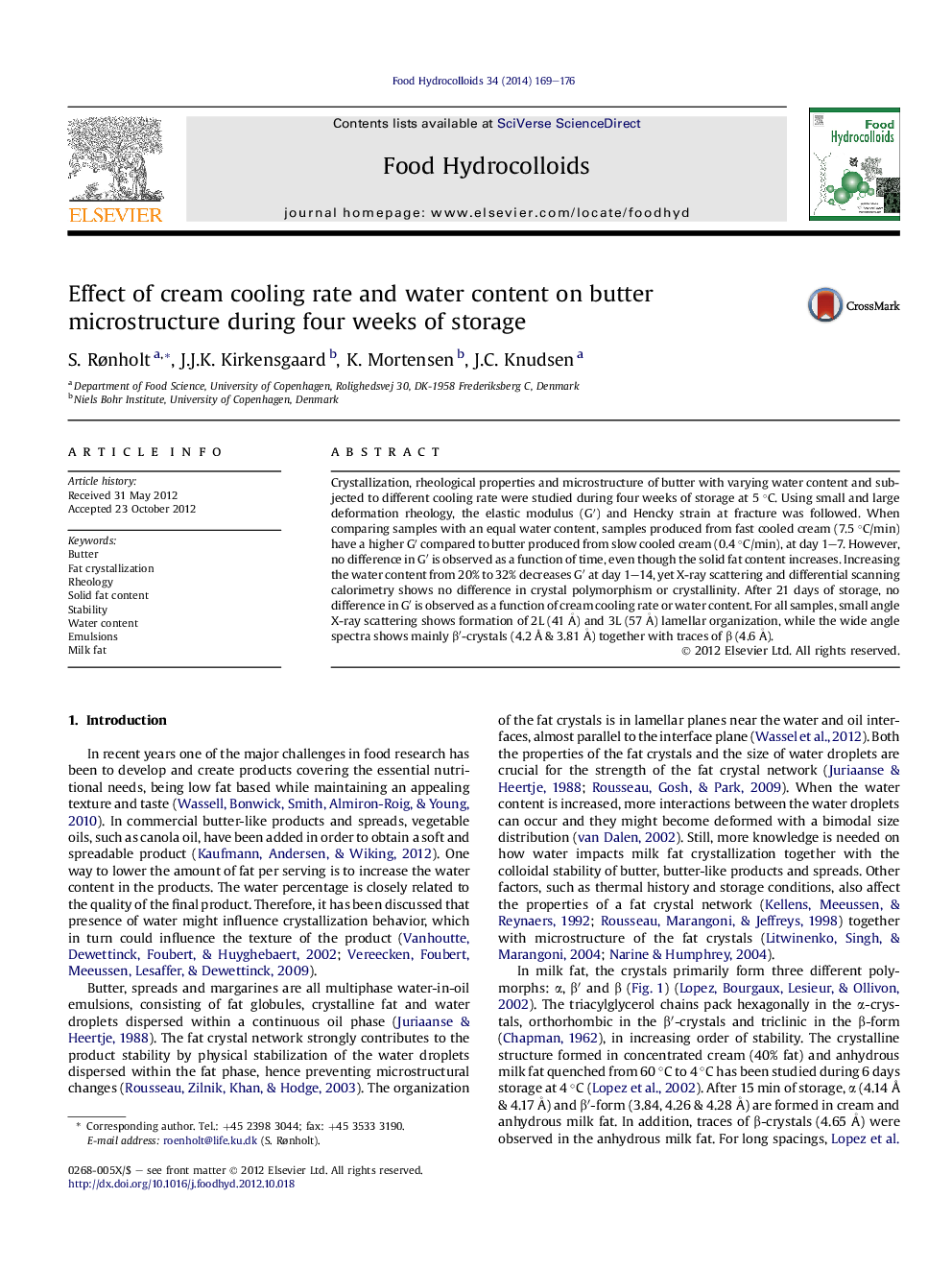| Article ID | Journal | Published Year | Pages | File Type |
|---|---|---|---|---|
| 603950 | Food Hydrocolloids | 2014 | 8 Pages |
Crystallization, rheological properties and microstructure of butter with varying water content and subjected to different cooling rate were studied during four weeks of storage at 5 °C. Using small and large deformation rheology, the elastic modulus (G′) and Hencky strain at fracture was followed. When comparing samples with an equal water content, samples produced from fast cooled cream (7.5 °C/min) have a higher G′ compared to butter produced from slow cooled cream (0.4 °C/min), at day 1–7. However, no difference in G′ is observed as a function of time, even though the solid fat content increases. Increasing the water content from 20% to 32% decreases G′ at day 1–14, yet X-ray scattering and differential scanning calorimetry shows no difference in crystal polymorphism or crystallinity. After 21 days of storage, no difference in G′ is observed as a function of cream cooling rate or water content. For all samples, small angle X-ray scattering shows formation of 2L (41 Å) and 3L (57 Å) lamellar organization, while the wide angle spectra shows mainly β′-crystals (4.2 Å & 3.81 Å) together with traces of β (4.6 Å).
Graphical abstractFigure optionsDownload full-size imageDownload as PowerPoint slideHighlights► Changing the water content from 20% to 32% does not affect fat crystal polymorphism. ► Increasing water content is associated with significant decrease in the elastic modulus. ► No recrystallization occurs during storage. ► Solid fat content increases during storage due to formation of β′-crystals. ► The microstructure changes during storage, as more crystals are formed.
